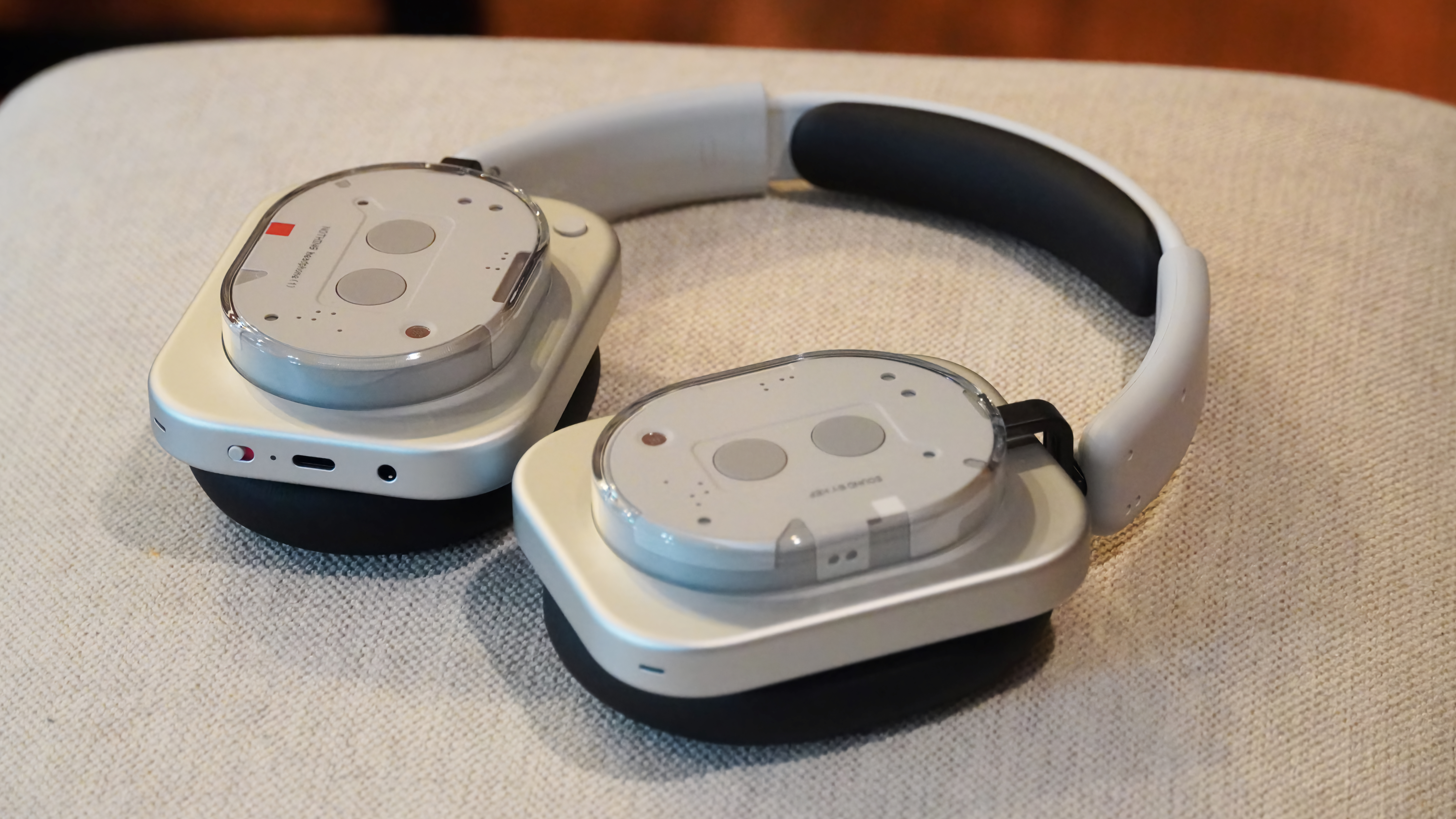
Nothing is still sticking to its roots as an eccentric tech startup, and the brand's first pair of over-ear headphones is proof of that. Usually, this is the time in a company's life cycle when it starts to play it safe, but the Nothing Headphone 1 do anything but. These headphones double down on what people love about Nothing, offering a unique design, competitive feature set, and an enticing value proposition.
At just $300, Nothing's Headphone 1 undercuts the likes of premium over-ears such as the Bose QuietComfort Ultra, Sonos Ace, and Sony WH-1000XM6. Surprisingly, the Headphone 1 holds its own compared to those competitors. The experience feels decidedly premium, and comfort is top-notch.
Audiophiles will nitpick the headphones' sound signature a bit, but the Nothing Headphone 1 is a compelling package anyway. It does enough things really well at an attractive price point to make you consider buying them, even if you don't have a Nothing phone already.
Nothing Headphone 1: Price and availability
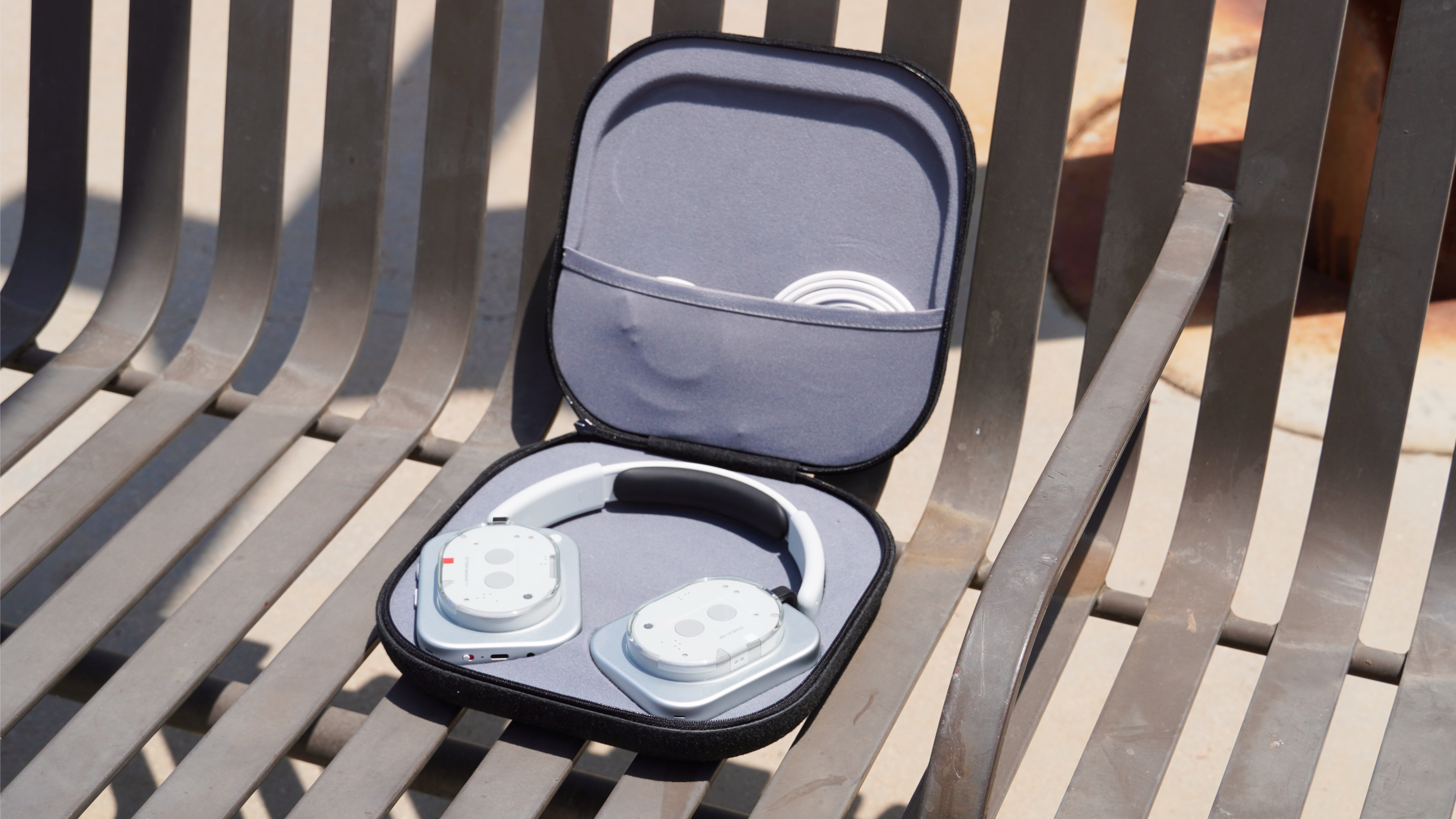
Nothing officially revealed the Headphone 1 in a YouTube livestream on July 1, 2025, and pre-orders open globally as of July 4, 2025. The headphones retail for $299 in the U.S., £299 in the U.K., and €299 elsewhere in Europe. They're available in black and white, and both colorways feature a transparent window giving a sneak peek at what's inside.
Nothing Headphone 1 was made in partnership with KEF, a renowned audio brand, to give the headphones a custom sound. They will be available for purchase starting July 15, 2025, and that's when pre-orders will ship. You can sign up to be notified when pre-orders open, and purchase the headphones when available, at the link below.
Nothing Headphone 1: What's good
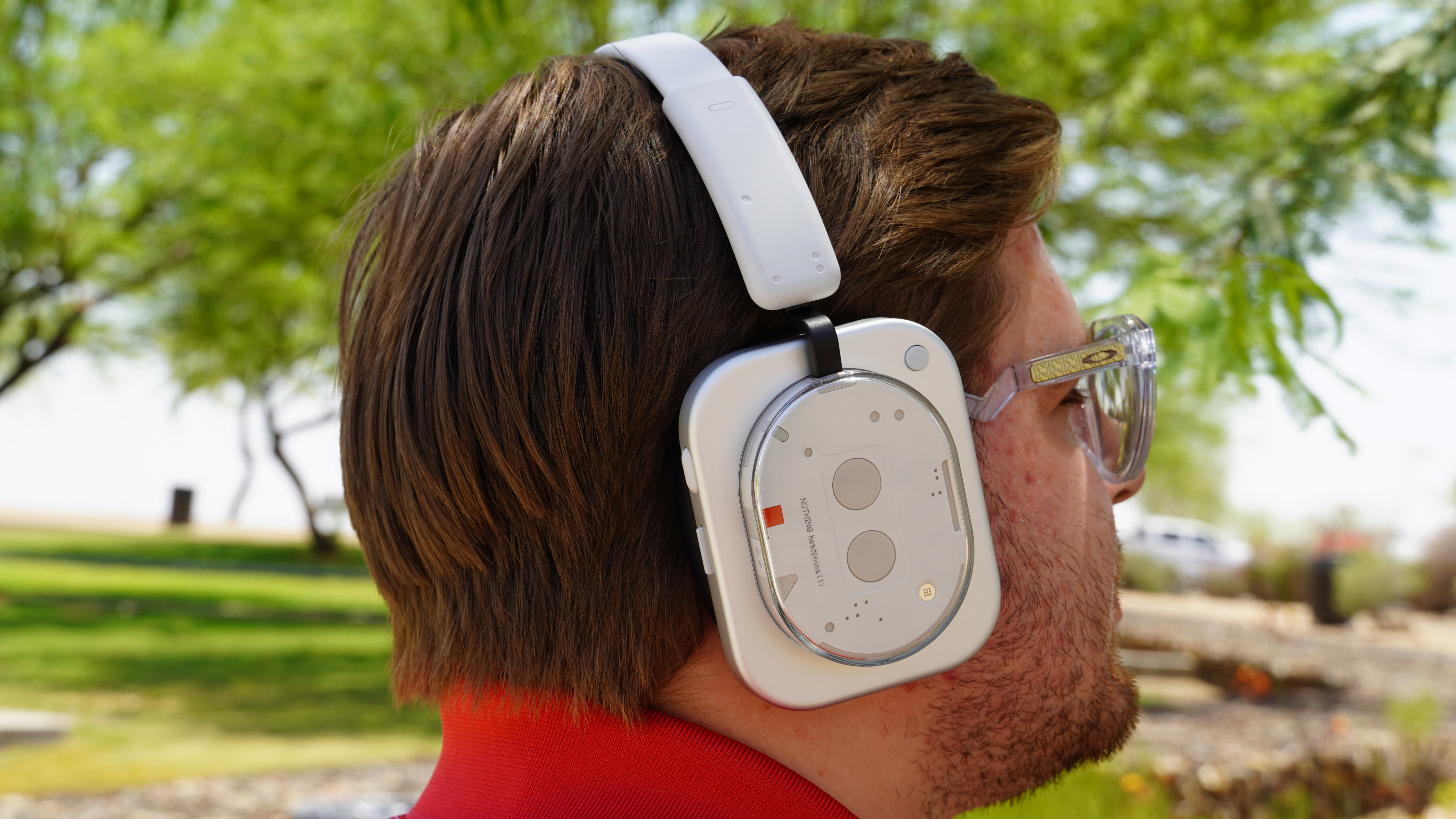
After unboxing the Nothing Headphone 1, it's hard not to immediately focus on the headphones' striking design. At first glance, Headphone 1 looks somewhat like an AirPods Max lookalike. That impression fades away quick, and soon you realize it looks like if you took a Nothing Phone 3a Pro and turned it into a pair of headphones.
Personally, I think Headphone 1 looks cool. The rectangular shape of the headphone chassis, made out of aluminum, feels premium. Then, the oval-shaped plastic window sits atop it to provide a little bit of flair. The translucency is a bit of a gimmick, as you can't really see much inside, but it's still a neat addition that matches nicely with other Nothing products.
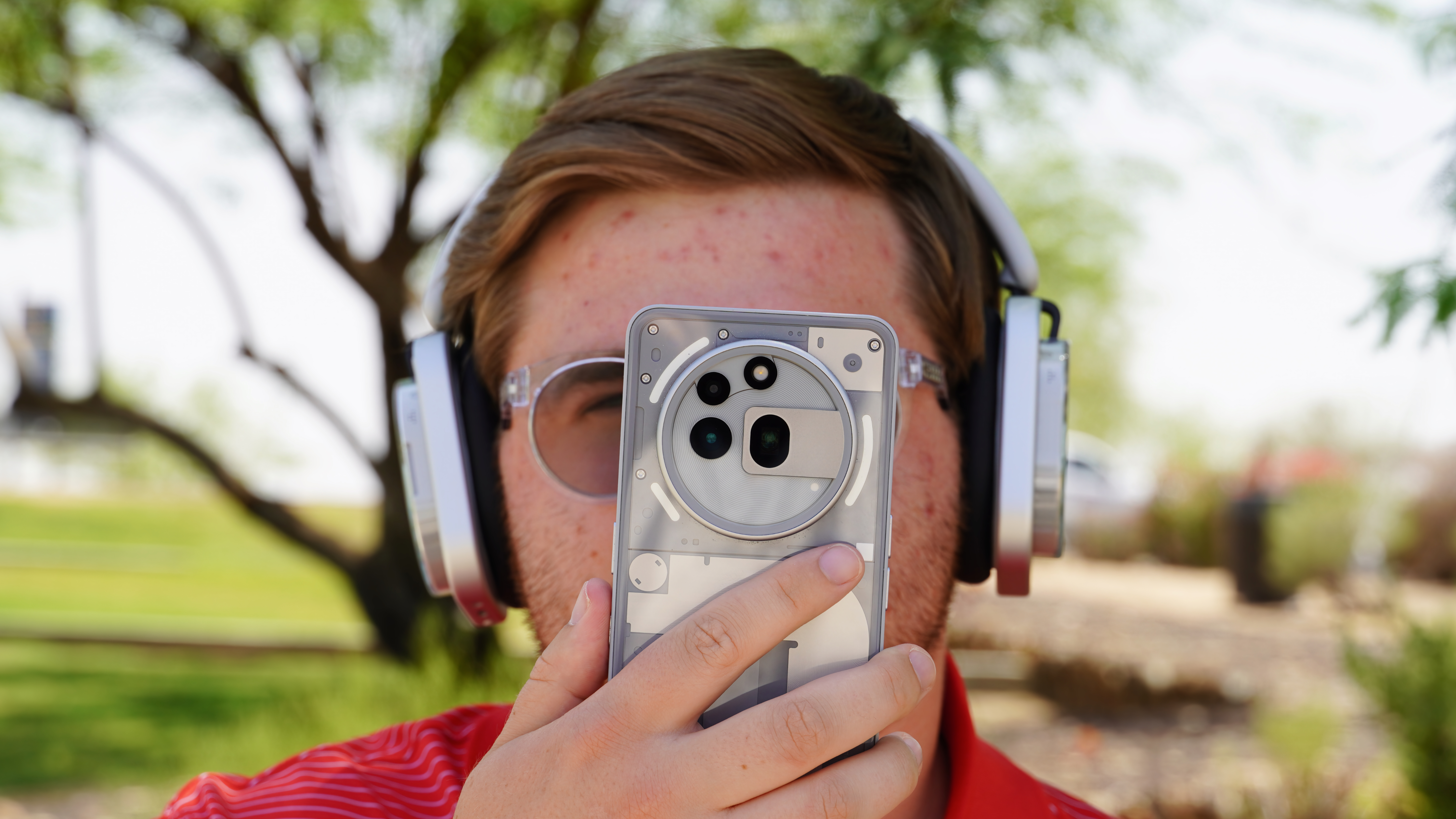
Despite the loud design language, Nothing Headphone 1 is fairly compact. The ear cups and main chassis are only 78mm thick combined, and most of that are the polyurethane foam-filled ear cushions. They weigh 329 grams, which is less than the gargantuan AirPods Max but more than most other over-ear competitors.
Still, I think I underestimated the Headphone 1's thin plastic headband. While looking a bit cheap compared to the aluminum housing, the adjustable and telescoping headband gets the job done. Nothing's Headphone 1 is right up there with some of my favorite headphones for comfort, including the Sonos Ace.
I could wear Headphone 1 for hours-long listening sessions with no discomfort, and found a good fit within seconds of putting them on.
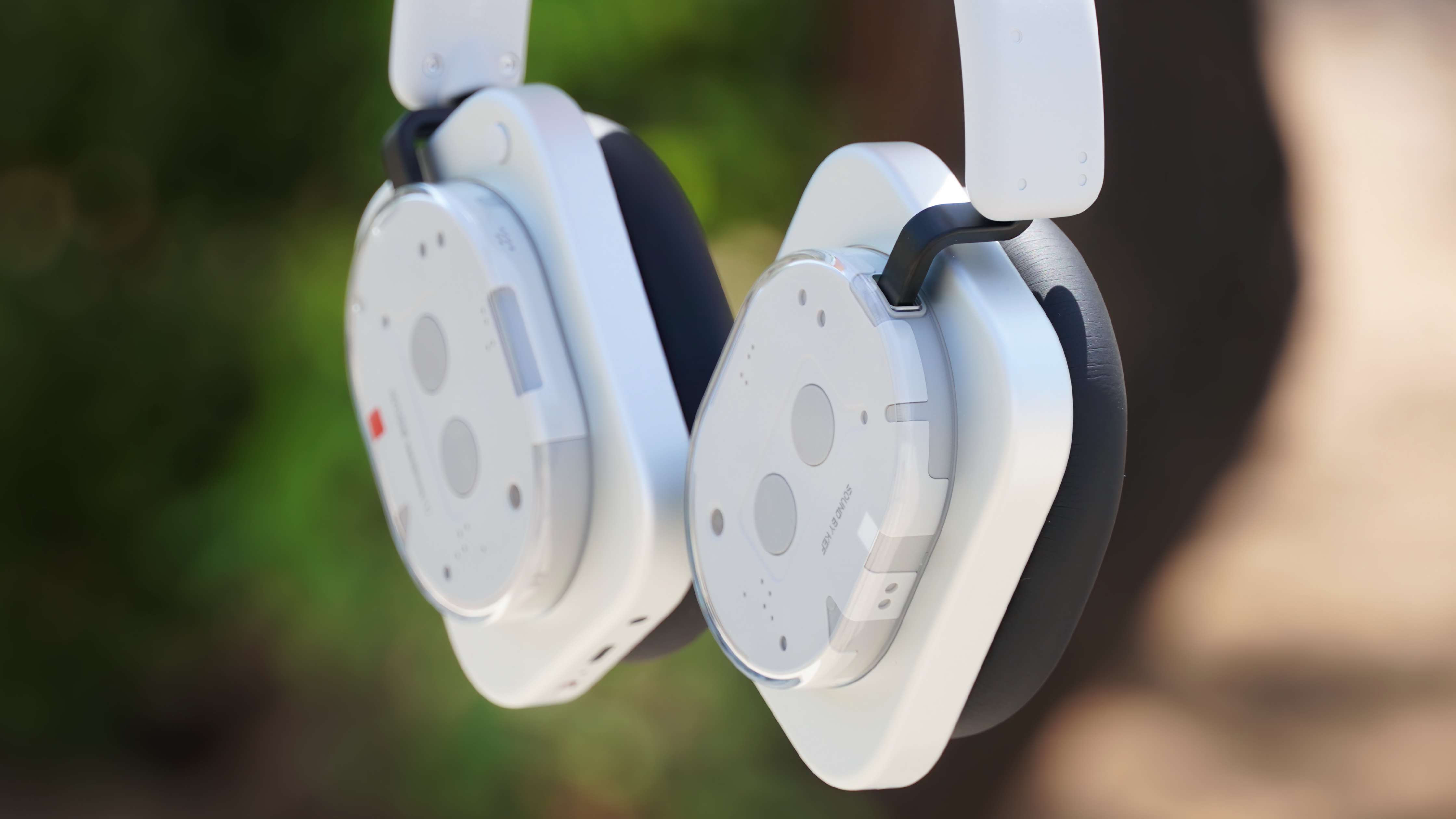
The Nothing Headphone 1's design isn't the only thing unique about this pair of headphones. The sound signature and audio experience is different, too. At the heart of things is a custom 40mm dynamic driver surrounded by 8.9mm of polyurethane to minimize distortion. It features custom tuning in partnership with KEF, and Nothing says Headphone 1 "presents a sound profile that reproduces music as the artist intended."
After listening to hours of music with Headphone 1, I'd say they sound generally good, but I'm not sure the above description is accurate. Nothing's Headphone 1 are tuned to prioritize the bass and lower frequencies more than mids and highs. Compared to something with a flatter frequency distribution — I often use Audio Technica ATH-M50X's for reference — Headphone 1 certainly adds its own unique flavor.
In my experience, the Nothing Headphone 1 will sound great about 90% of the time. However, you're likely to run into a few tracks that just sound off because the vocals or high-end sounds are muddied by an overreaching bass. If one of these songs just happens to be one you listen to a lot, the difference in sound might be obvious. Most of the time, you're going to get a very full sound out of the Nothing Headphone 1.
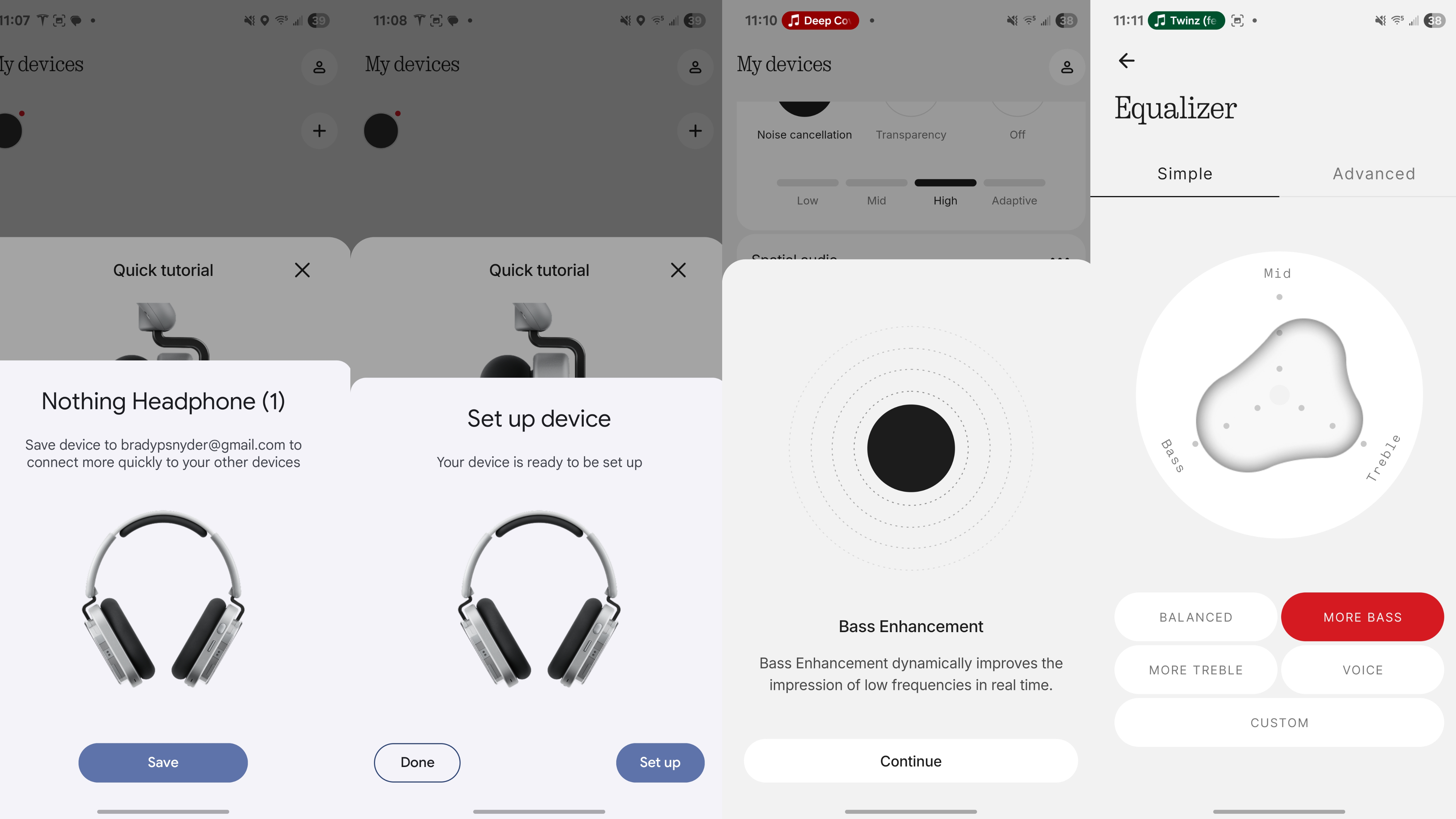
The reason why this isn't too big of a deal is that Nothing is very transparent about Headphone 1's sound signature, for the most part. You can see this prioritization of lows and mids in the visual range for the Balanced EQ mode in the Nothing X companion app.
If you don't like it, you can easily adjust it. I found myself switching to the More treble EQ preset if I knew I was actively listening to genres like folk, alternative, or jazz, and that addressed some of my concerns. The headphones' spatial audio modes help add separation to the soundstage, too, and the head tracking is effective. I don't always like listening to music in spatial audio, but in this case, it added the clarity to things such as vocals or cymbals I was craving.
The level of control you get over Headphone 1, both in the app and on-device, is what makes the headphones great. For instance, you can choose between having active noise-cancelation or transparency mode on or off, but you can also adjust the strength of the ANC. This is handy, and I prefer it to how other headphones handle ANC modes, as it can be hard to tell when they're on or off.
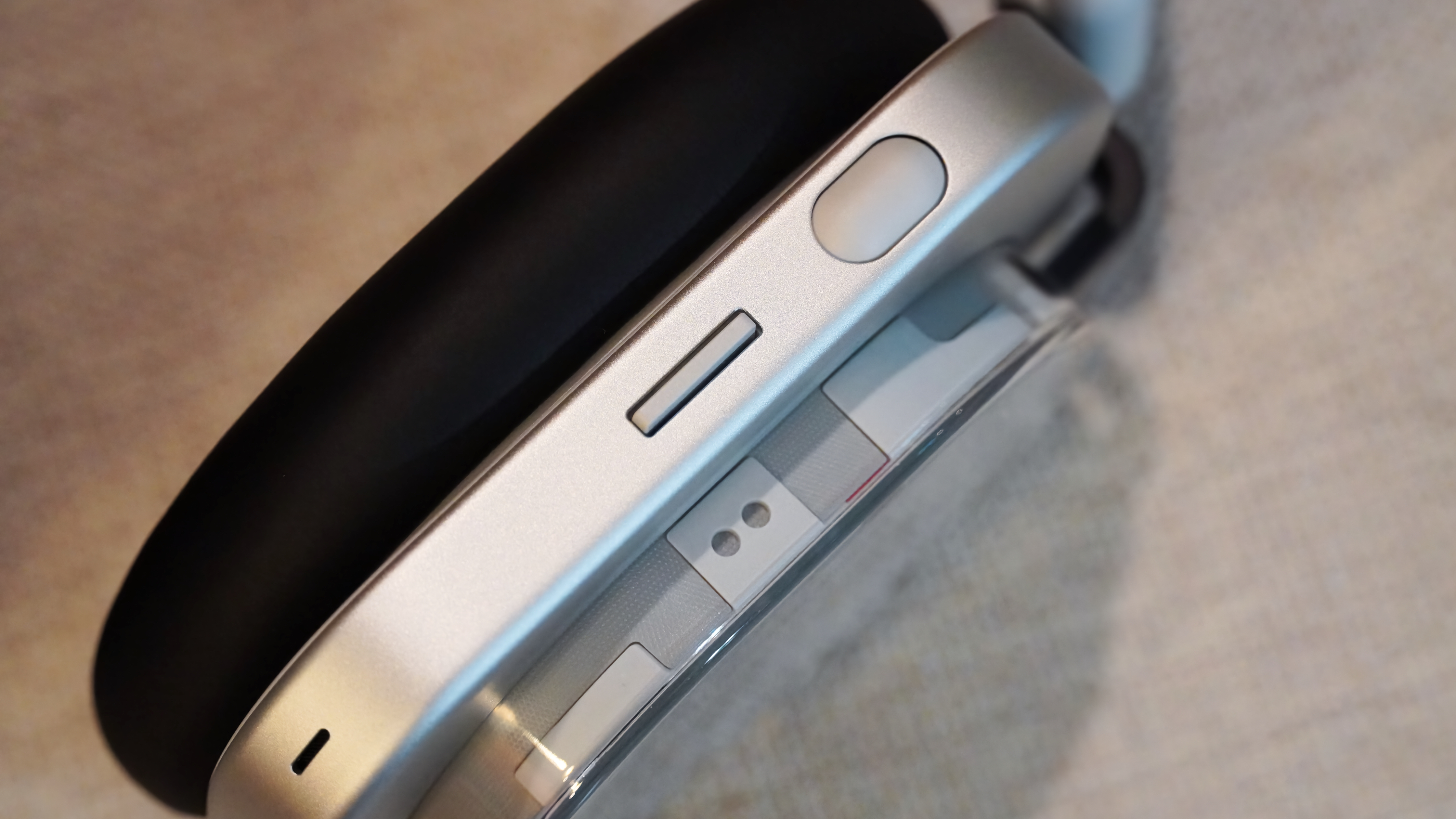
Speaking of on-device controls, it's impossible not to mention everything the Nothing Headphone 1 offers. You get a paddle for playback control and a roller for volume, play/pause function, and ANC modes. There's also another button for voice assistant control and a dedicated Bluetooth pairing button. Oh, and Headphone 1 has its own on/off switch too.
I'd reconfigure the controls slightly, setting the voice assistant button to cycle through ANC modes instead. Otherwise, they're incredibly helpful, and way better than capacitive touch controls or a clunky button with too many functions. Paired with a USB-C port and 3.5mm jack, Headphone 1 goes old-school with hardware controls and ports, and I love it.
Nothing Headphone 1: What's not good
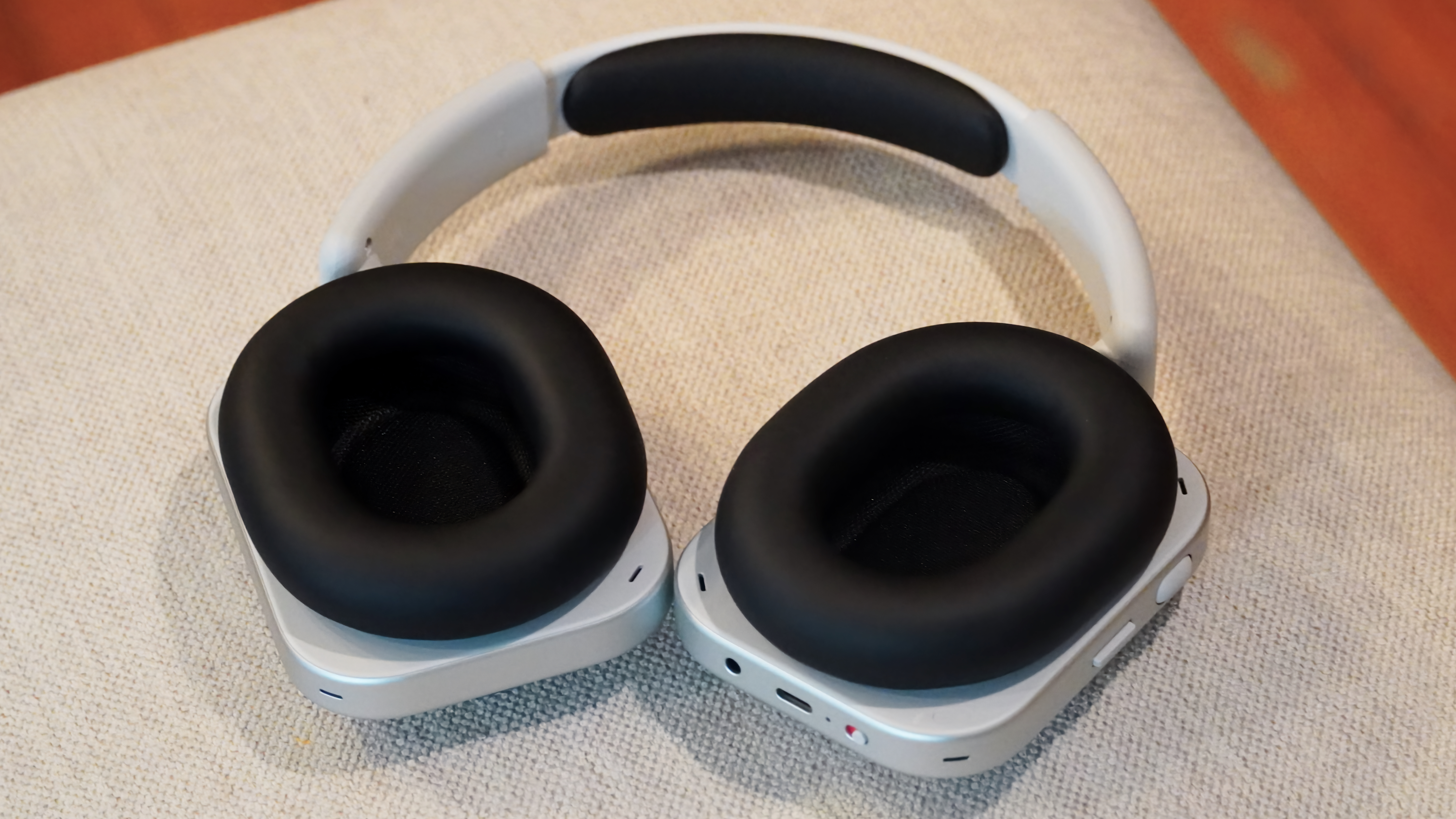
Nothing got a lot right with the Headphone 1, but I would've liked to see the pair handle a wider variety of songs more consistently. As I alluded to earlier, Headphone 1's sound tuning doesn't favor every kind of track. When you run into that one song that doesn't sound quite right, it might bug you. By comparison, something like the Sonos Ace can handle more songs without you needing to break into the Nothing X app equalizer.
Another part of the Headphone 1 experience that is mostly good are the buttons. It's great that they are here, but the paddle in particular could be easier to use. By default, the paddle can be flicked left or right to restart a song or change tracks. You're supposed to double-flick the paddle to go to the previous song, but need to take an awkward pause to do it. If you try to flick the paddle too quickly, it simply won't do anything.
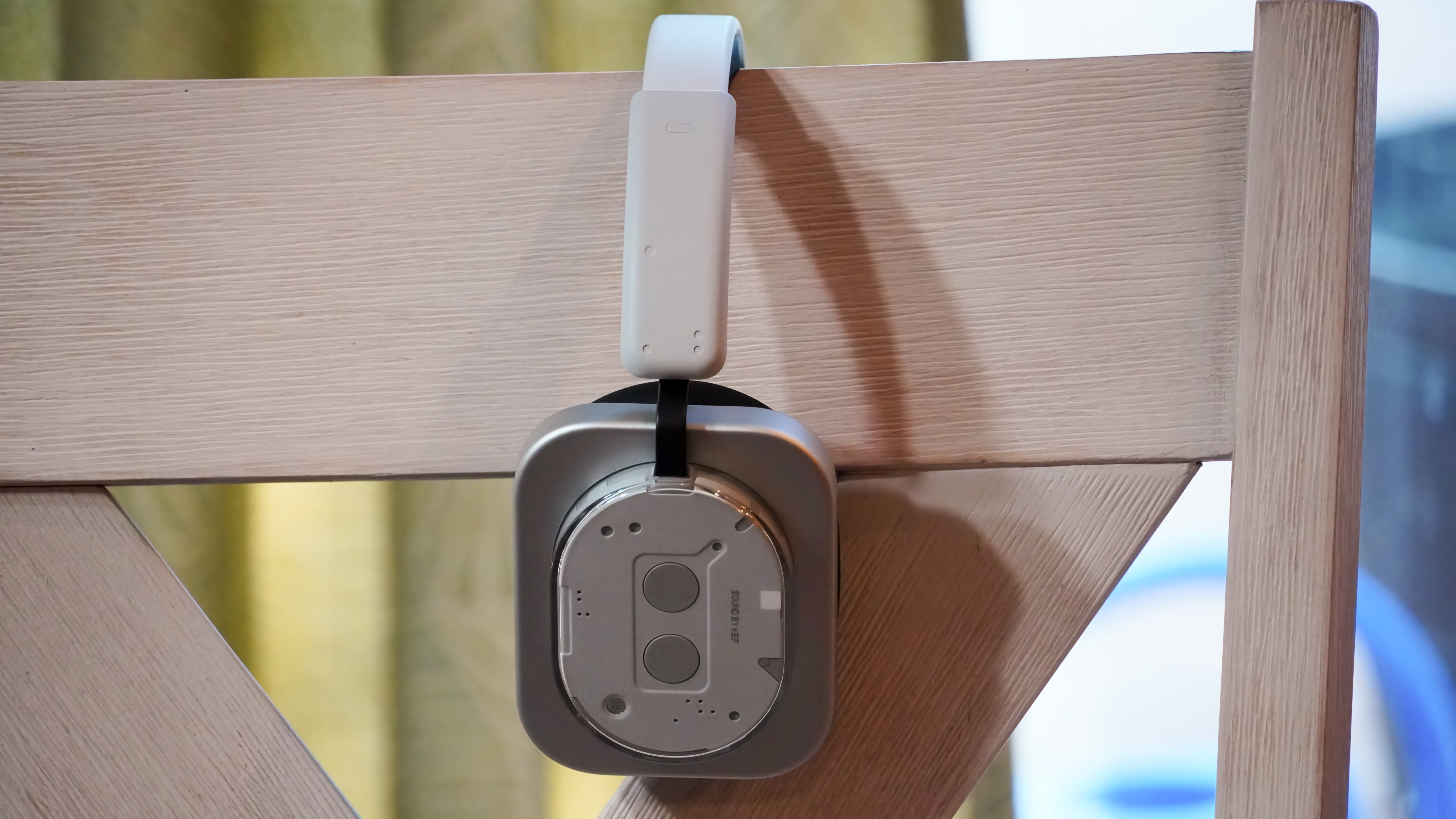
Finally, the Headphone 1's battery life is excellent, lasting up to 35 hours with ANC on and up to 80 with it off. I just wish the 3.5mm jack would work as a fallback when the battery runs out, which it doesn't. You still need the battery to have juice in order to use the analog ports, and to me that slightly limits their utility.
Nothing Headphone 1: Competition
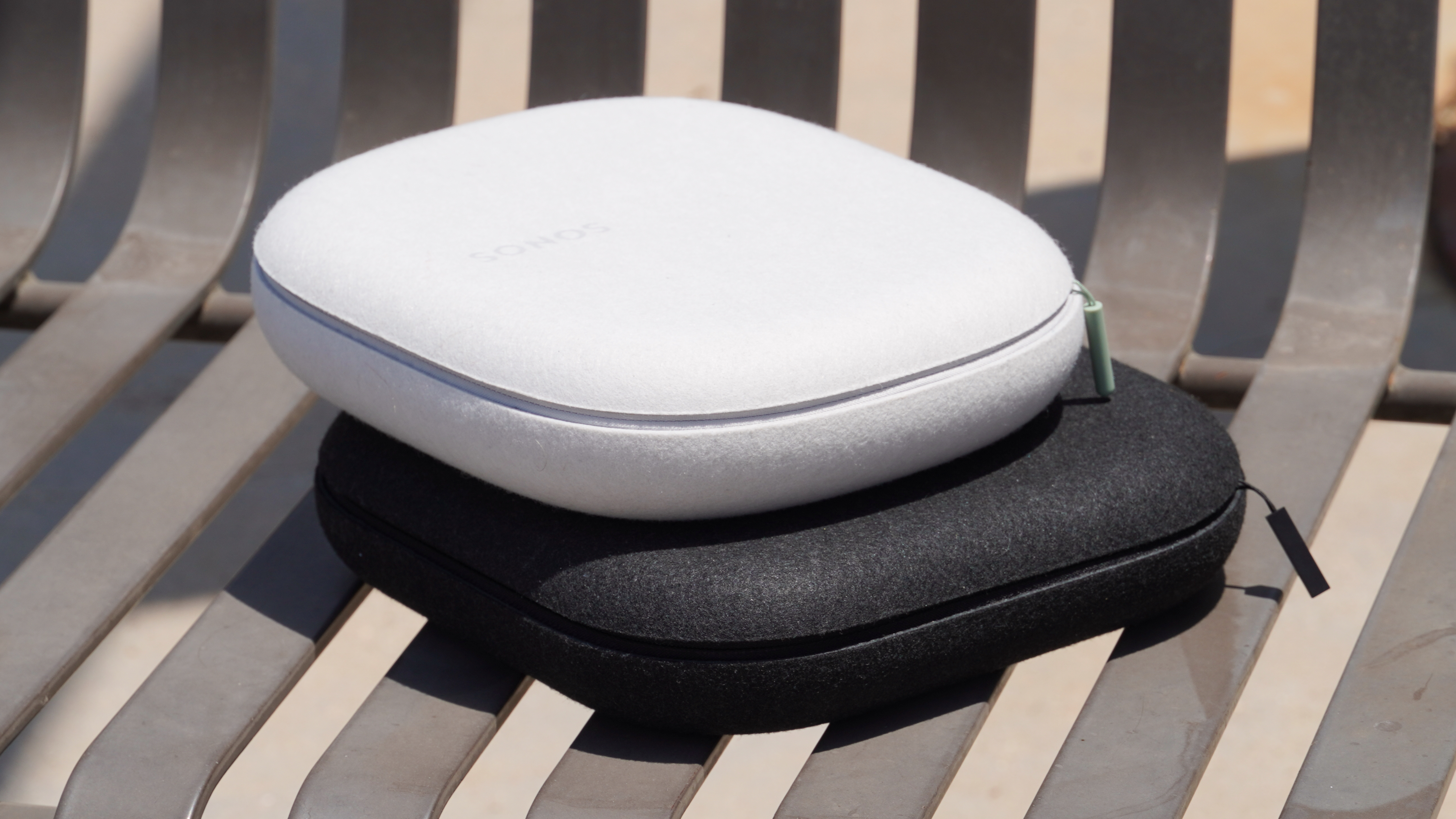
It's important to remember that many of the over-ear headphones I'd take over the Nothing Headphone 1 cost much more. The Sonos Ace, Bose QuietComfort Ultra, and Sony WH-1000XM6 all cost around $450 — that's $150 more than the Headphone 1 retails for.
Rather, the Nothing Headphone 1 competes more directly with a pair of over-ears like the Beats Studio Pro. They retail for $350 and are frequently on sale, and I've used them for months. Nothing's over-ears blow the Studio Pro out of the water, as Beats' offering is made out of cheap plastic and has a mediocre sound. So, when you consider the Headphone 1's price point, it's easier to look past some of its flaws.
You might be able to snag an older pair of Sony or Bose headphones for around the same price as the Headphone 1. You could certainly find a pair of wired headphones for less than the Nothing Headphone 1 that sound better. But if we're talking about new, wireless, over-ear headphones with ANC, the Nothing Headphone 1 fit the $300 price point very well.
Nothing Headphone 1: Should you buy it?
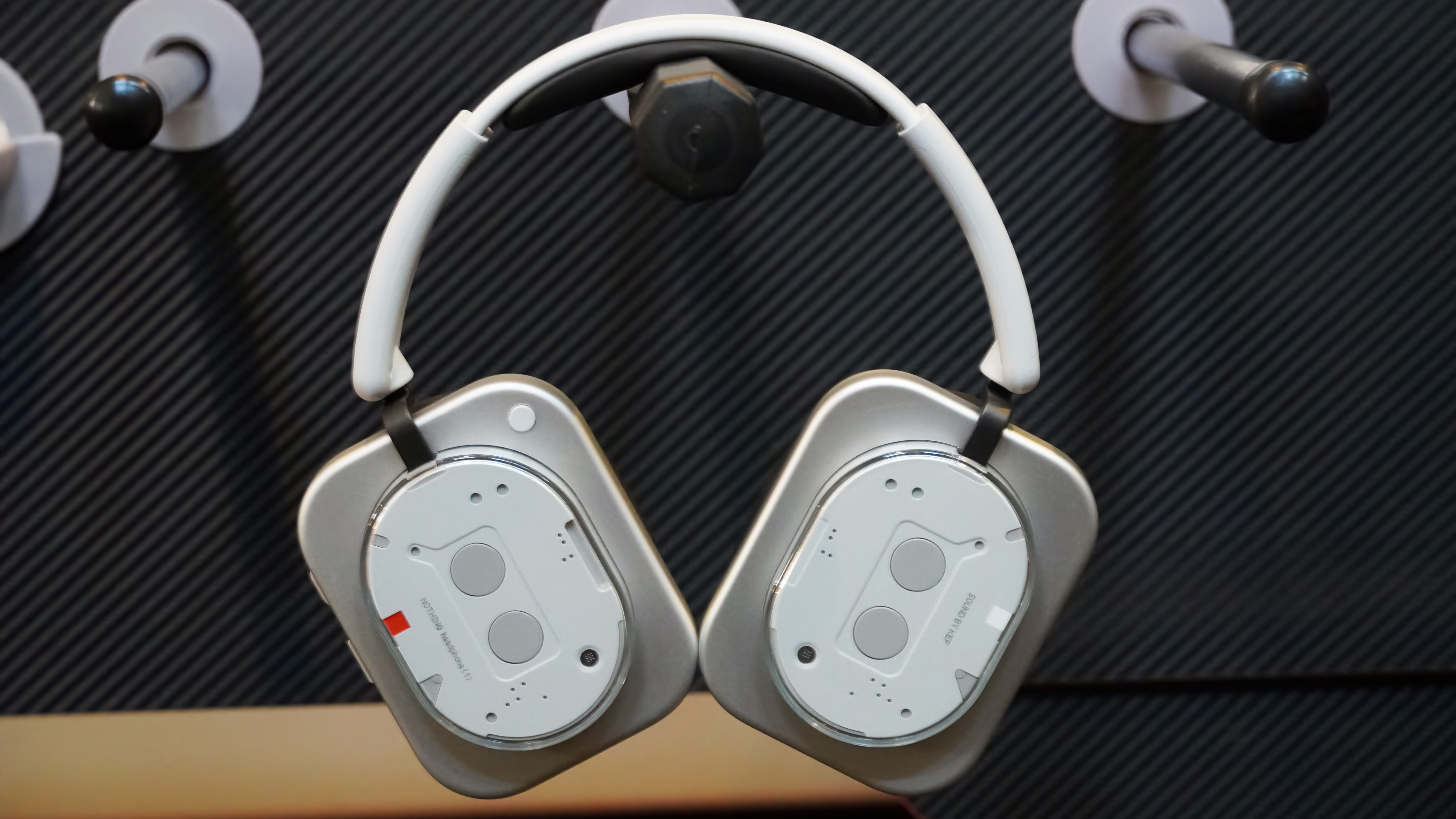
You should buy these if...
- You like Nothing's eccentric design language
- You want a pair of wireless, over-ear headphones with ANC
- You have around $300 to spend and prioritize a premium build
You shouldn't buy these if...
- You want a pair of headphones with a more balanced soundstage
- You feel overwhelmed by the amount of buttons
- You don't like the loud design
Nothing products aren't for everyone, but Headphone 1 might be the brand's most appealing product for the masses yet. It's simultaneously an excellent fit for Nothing phone owners and Android users on a wider scale that simply want a quality pair of over-ear cans for $300.
As long as a bass-focused sound signature isn't a dealbreaker — let's be honest, many people prefer this identity — the Headphone 1 are an easy recommendation. They feel premium, nail comfort, and generally sound good with quality ANC models and top-notch customization.
A sneaky-good value
Nothing's Headphone 1 might not stack up perfectly against the top over-ears from Bose, Sonos, and Sony, it doesn't have to, because it's much cheaper than all those offerings. At the $300 price point, Headphone 1 provides a more premium experience than its price tag would suggest.







